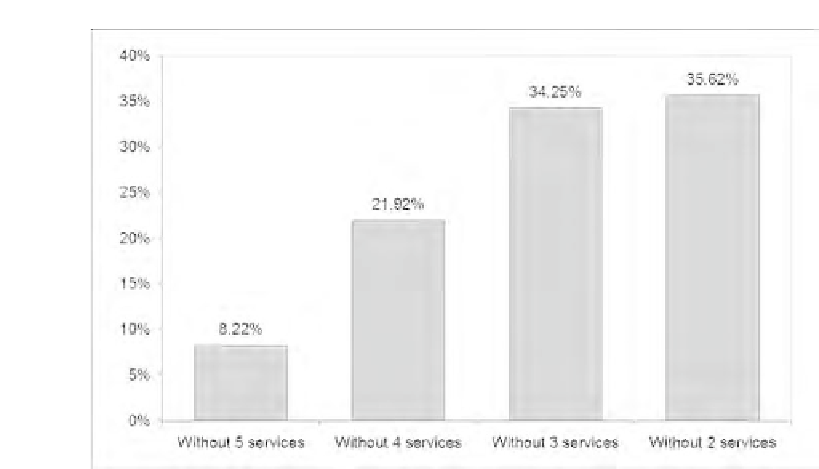Agriculture Reference
In-Depth Information
Figure 9.2 Access to services where workers reside
('non-urbanizable' is the term used by the city). Infrastructure of basic services
such as electricity, water supply, garbage collection, asphalt roads, mass
transport, gas, sewers and telephones, among other things, either do not exist
or are limited, all of which leads to di
culties in accessing public services
(Figure 9.2). This study focused on the green belt, where urban development is
not permitted.
Some peri-urban areas where horticultural production units were found
were more than 3 km from workers' homes, being well outside the city limits.
Such areas represented a geographical barrier for the farm population, who
often had to return home in the dark (Dı´ az et al, 2000, p13). Moreover, only
23 quintas (31.5 per cent) offered a bus service.
Studies by the Food Institute of Rosario (part of the municipal health
secretariat at Rosario City Hall) that have assessed the quality of drinking
water have found that 59 per cent of the samples had fecal coliform counts
which exceeded acceptable norms for drinking water. In addition, E. coli were
present in 31 per cent of the samples (Llanes et al, 2006). However, the survey
showed that less than half the population is concerned about the quality of the
drinking water. In contrast, water for irrigation is more closely monitored.
This indicates that despite the presence of services on farms, there are health
risks associated with water provision on them.
Duration of the working day
The care of crops and field work is largely done by medieros, with
commercial and administrative work being done by the owners of the quinta.








